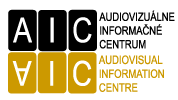|
|
|||
Juraj Krasnohorsky (1980) was born in Bratislava where he works for Artichoke as film producer and for the international education programme for producers, CEE Animation Workshop, as head of studies. He studied physics, mathematics, and film in Geneva, Bilbao, and Paris, and has been directing and producing films in Slovakia since 2008. He is an EAVE programme graduate, a Slovak Association of Animated Film Producers member, and a CEE Animation board member. He is also a pedagogical contributor to European and Asian workshops for creative producers.
Your production company, Artichoke, co-produced the film White Plastic Sky. What gave rise to this collaboration? Why did the project catch your interest?
White Plastic Sky is one of the success stories of CEE Animation, the international collaboration of producers from Central European associations of animated film. Up to this day, it has become a large structure organizing workshops as well as a pitching forum, which is where I met the film’s producers and directors ten years ago. At that time, they were teaching at the prestigious MOME in Budapest. When they had the idea for a film set somewhere in between Budapest and Tatras that would combine 2D and 3D technologies – meaning work could be easily split among two teams in two different countries – it felt natural to join our creative forces, capabilities and money to try to make the ambitious project come to life.
And what part of the script caught my attention? To me, the script seemed to be the absolute best one I’ve ever read in my life. I’ve always had a thing for sci-fi, but the human story and the environmental and philosophical dimensions resonate very strongly here. It felt as if I was reading one of the classics of the genre, but a one yet undiscovered. It’s a love story of two people in a world where nature disappeared and humans are the only thing left. It is modern and topical since it clearly raises the question of what will we do when climate change takes a turn for the worse, which is what all the evidence suggests. In some ways, it’s reminiscent of the story of Adam and Eve. In other aspects, it’s like the ancient tragedy of Orpheus and Eurydice, it is mythological, even. Moreover, the idea of depicting our Central European region, Budapest and the Tatras, in the 22nd century seemed like a great idea to me. In general, films depict the future in this part of the world very rarely.
The duo Tibor Bánóczki and Sarolta Szabó wrote the script and directed the film, but it is a Hungarian-Slovak co-production. What impact has this project had on the Slovak film scene?
White Plastic Sky was made by combining technologies. The characters are in 2D whereas the sets and all objects were made in 3D. The cameras will also move in 3D. This made it possible to split the work among two teams. Everything 2D-related was done in Hungary and 3D was done in Slovakia. A whole team of young Slovak animators was trained on this film made in Ekran studio under the supervision of Peter Košťál. This was the intention behind bringing the film to Slovakia from the very start, so that our professionals gained experience and some local background was built – with the idea of those people being able to put the gained know-how and capabilities to good use on other Slovak projects. We really managed to accomplish that and now, the same team continues to work on another 3D project, a film by Slovak director Marta Prokopova that we are producing.
Artichoke’s finished projects and works in progress include fiction films and a documentary series, but animated works are undoubtedly the most prevalent. In Slovakia, it’s mostly animated films’ directors that get to produce them. What has drawn you towards animation the most?
I’ve always found animation appealing. Even as a beginning director, I had the ambition to make animated films too. It has never been about the technique for me, not even later when I started working as a producer exclusively. If animation is the best way to tell a story, then it simply works. This was the case for the well-known Waltz with Bashir, for instance – no one ever starts to wonder whether it would be better as live-action. However, my work on animated films in the last ten years also made me grow fond of the people from the field of animation, mostly due to the initiatives related to the international CEE Animation association. The educational training titled CEE Animation Workshop, which I established and have been in charge of, is part of it. In comparison to fiction film creators, animation folks have always appeared less competitive and more easy-going to me, in a way.
What projects of yours are currently in the works?
Regarding animated films, we are shooting Of Unwanted Things and People, a puppet feature film for kids this year. It is another very interesting co-production of four countries – the Czech Republic, Slovakia, Slovenia, and France. Two more short animated films from our production will premiere this year – Hungarian director Olivér Hegyi’s Garden of Heart and the much-anticipated second film of the Oscar-nominated Daria Kashcheeva, Electra. A poem. We hope we’ll finish two more short animated pieces next year – director Jan Saska’s Hurikan and Slovak director Marta Prokopová’s Everything We Missed. Another project that brings me joy are new episodes of Icons, the successful docuseries about Slovak architecture. Aside from the second season in Slovakia, it is set to also make an international, Central European version. Then there is the fiction script The Fall by Patrik Pašš and Laura Siváková. We have great ambitions with the project, we are talking to Juraj Lehotský about possibly directing it, and we would like to bring in an international cast to make a bigger, European film.
What do you feel are Slovak animation’s strong suits capable of catching the interest of international producers?
Considering how relatively small our film industry is (especially when it comes to animation), Slovakia has surprisingly many talents of European significance, which is very positive. For years, Kata Kerekesová with her series Mimi and Lisa and The Websters has been a successful example for the entire Central European region. We have excellent, talented young directors which have already earned international recognition with their first works, and can now make bold films. And at least in my experience, we have proven to be a strong partner even to big European projects, especially in relation to 3D animation. Our contribution lies not so much in a large number of experienced people, but rather in ingenious solutions where a smaller work team would suffice. I’ll mention the animated feature film The Siren by Sepideh Farsi that will also premiere at the Berlinale in the Panorama section, for instance. It’s a big French-Belgian-German-Luxembourgish co-production in which we haven’t participated as co-producers, but thanks to a great idea and excellent work of a small team from Blue Faces studio located in Bratislava, we made almost 30 minutes of animation in the film.
So two of the films you collaborated on, White Plastic Sky and The Siren, made it to this year’s selection of the Berlinale. Could you elaborate on that a bit more?
The French producer Sébastien Onomo I met via the CEE Animation network was looking for a lot of 3D animators because they needed to finish a film that had been in the works for years. Unfortunately, Slovakia is not a country where you could find masses of the kind of animators he was looking for, but I reached out to Blue Faces and we suggested the use of motion capture technology which the studio is well-versed in. This technology works by actors wearing special suits with motion capture sensors. We paired the drawn models of the film’s characters with live actors which saved us a ton of time in animation. Until then, every move was animated by hand, which is very time-consuming. The director Sepideh Farsi found this technique to be super convenient to her, as she had more experience with fiction films. Thanks to us, she could direct live actors whose movement was translated into animation. It was a game-changing moment for the film and since then, the French producer has been strongly promoting us, because, as they say, we "saved their ass". The good reputation we built with The Siren earned us a place in two big co-productions we are developing, and what we are bringing to the table is the specific know-how we have precisely from making The Siren. I would like to emphasise that for us, the 33% cash rebate in Slovakia is a very important instrument when it comes to such extensive co-production. This financing system is well-known to European producers and it is what makes us competitive on the European level. I feel that even though our market is small, we can play a key part even in big and costly European films thanks to good ideas. This has vividly put us on the map of European animated film in the last years and I dare say that our brand will rise in the upcoming years. Sometimes, all you need to make an entire industry visible to the whole world, is one film that resonates intensely. I think White Plastic Sky has all that it takes.
Related AIC articles:
Encounters: White Plastic Sky
published: 08.02.2023
updated: 08.02.2023




